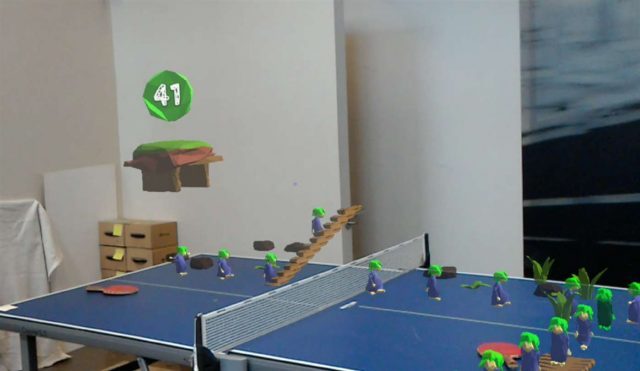Canadian technology company Globacore have created an AR homage to video game classic Lemmings (1991), now for Microsoft HoloLens. HoloLems, which is free on the Microsoft Store, uses HoloLens’ spatial mapping technology to generate an obstacle course from the player’s real environment.
This gameplay video (heading this article) shows Globacore have managed to reproduce the basics of Lemmings within a real environment—one of the more impressive examples of HoloLens technology being applied to gaming. Young Conker, despite receiving a backlash for its peculiar character redesign, showed similar promise in terms of platforming-style AR gameplay, but the gaze-based control system with voice commands is probably more suited to HoloLems, where the player has indirect control of creature movement.
 As Microsoft’s self-contained augmented reality headset is not yet a consumer product, with the Development Edition an eye-watering $3000, it’s understandable that the game library is very small, mostly limited to technology demonstrations; this first generation hardware is aimed at attracting the business and enterprise markets. However, much like VR, gaming showcases are important for spreading the word about AR’s broad potential.
As Microsoft’s self-contained augmented reality headset is not yet a consumer product, with the Development Edition an eye-watering $3000, it’s understandable that the game library is very small, mostly limited to technology demonstrations; this first generation hardware is aimed at attracting the business and enterprise markets. However, much like VR, gaming showcases are important for spreading the word about AR’s broad potential.






